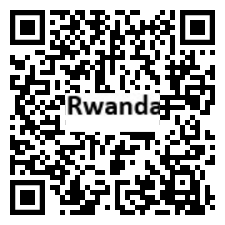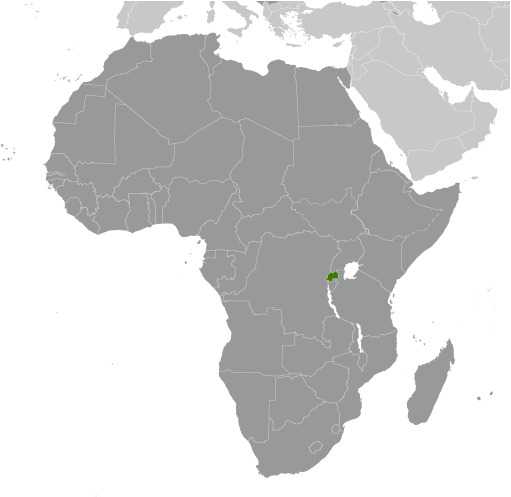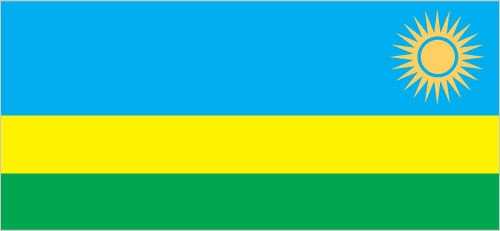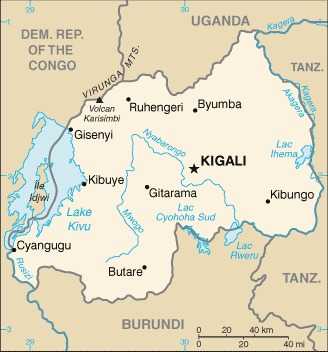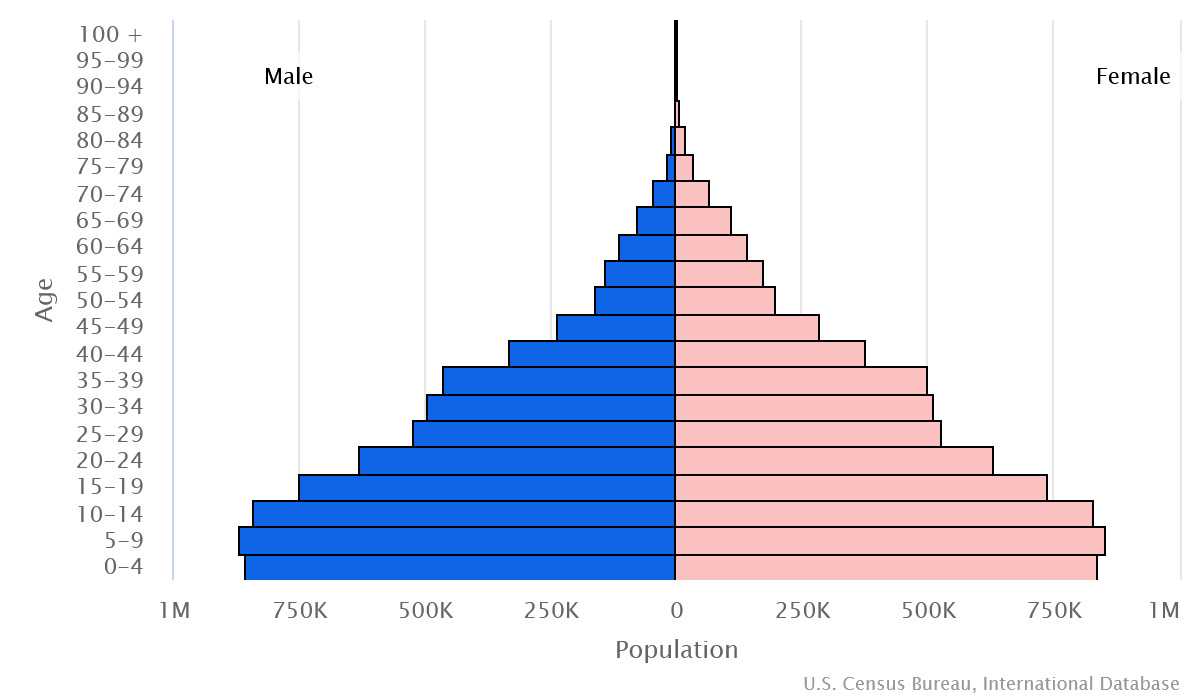Introduction
Background
A Rwandan kingdom dominated the Great Lakes region from the mid-18th century onward, with Tutsi rulers conquering others militarily and centralizing power. German colonial conquest began in the late 1890s, but the territory was ceded to Belgian forces in 1916 during World War I. Rwandan independence came in 1962. Conflict between Tutsi and Hutu ethnic groups continued for decades, including genocide in 1994. Rwanda held its first local elections in 1999 and its first presidential and legislative elections in 2003.
Geography
Area
total : 26,338 sq km
land: 24,668 sq km
water: 1,670 sq km
Climate
temperate; two rainy seasons (February to April, November to January); mild in mountains with frost and snow possible
Natural resources
gold, cassiterite (tin ore), wolframite (tungsten ore), methane, hydropower, arable land
People and Society
Population
total: 13,623,302
Ethnic groups
Hutu, Tutsi, Twa
Languages
Kinyarwanda (official, universal Bantu vernacular) 93.2%, French (official) <0.1, English (official) <0.1, Swahili/Kiswahili (official, used in commercial centers) <0.1, more than one language, other 6.3%, unspecified 0.3% (2002 est.)
Religions
Christian 95.9% (Protestant 57.7% [includes Adventist 12.6%], Roman Catholic 38.2%), Muslim 2.1%, other 1% (includes traditional, Jehovah's Witness), none 1.1% (2019-20 est.)
Population growth rate
1.62% (2024 est.)
Government
Government type
presidential republic
Capital
name: Kigali
Executive branch
chief of state: President Paul KAGAME (since 22 April 2000)
head of government: Prime Minister Edouard NGIRENTE (since 30 August 2017)
Legislative branch
description: bicameral Parliament consists of:
Senate or Senat (26 seats; 12 members indirectly elected by local councils, 8 appointed by the president, 4 appointed by the Political Organizations Forum - a body of registered political parties, and 2 selected by institutions of higher learning; members serve 8-year terms)
Chamber of Deputies or Chambre des Deputes (80 seats; 53 members directly elected by proportional representation vote, 24 women selected by special interest groups, and 3 selected by youth and disability organizations; members serve 5-year terms)
Economy
Economic overview
fast-growing Sub-Saharan economy; major public investments; trade and tourism hit hard by COVID-19; increasing poverty after 2 decades of declines; Ugandan competition for regional influence; major coffee exporter; contested GDP figures
Real GDP (purchasing power parity)
$42.701 billion (2023 est.)
$39.45 billion (2022 est.)
$36.474 billion (2021 est.)
Real GDP per capita
$3,000 (2023 est.)
$2,900 (2022 est.)
$2,700 (2021 est.)
Agricultural products
bananas, cassava, sweet potatoes, potatoes, plantains, maize, beans, pumpkins/squash, taro, sorghum (2022)
Industries
cement, agricultural products, small-scale beverages, soap, furniture, shoes, plastic goods, textiles, cigarettes
Exports
$3.509 billion (2023 est.)
$2.993 billion (2022 est.)
$2.11 billion (2021 est.)
Exports - partners
UAE 32%, Democratic Republic of the Congo 25%, Thailand 5%, US 3%, Ethiopia 3% (2022)
Exports - commodities
gold, tin ores, coffee, malt extract, rare earth ores (2022)
Imports
$5.783 billion (2023 est.)
$4.978 billion (2022 est.)
$3.856 billion (2021 est.)
Imports - partners
China 19%, Tanzania 11%, Kenya 10%, UAE 10%, India 7% (2022)
Imports - commodities
refined petroleum, gold, palm oil, rice, raw sugar (2022)
Exchange rates
Rwandan francs (RWF) per US dollar -
Page last updated: Wednesday, July 24, 2024
